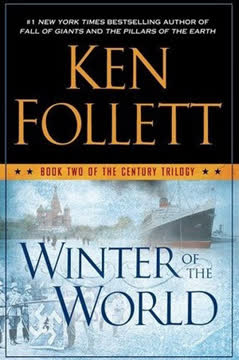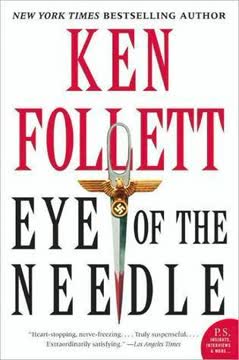Plot Summary
A Brother's Grim Reunion
In the aftermath of a disastrous raid, Bart Hoare survives a plane crash in the North Sea, losing his crew but saved by a destroyer. His brother, Digby Hoare, visits him in the hospital, where they discuss the high losses suffered by Bomber Command. They suspect the Germans have advance knowledge of their missions, hinting at treachery or a technological breakthrough. Digby, working for the Prime Minister, is tasked with uncovering the reason behind these losses, setting the stage for a deeper investigation into the enemy's capabilities.
Secrets of the Danish Coast
In occupied Denmark, young Harald Olufsen, a brilliant and rebellious youth, discovers a secret German installation on his island home of Sande. The installation features a mysterious rotating aerial, suggesting a new German technology that could be linked to the Luftwaffe's success against British bombers. Harald's curiosity and engineering skills position him as a key player in the unfolding conflict, as his discovery becomes a crucial piece of intelligence in the fight against the Nazis.
A Dangerous Proposition
Hermia Mount, an MI6 analyst, is determined to uncover the secret behind the German radar system. Despite bureaucratic resistance, she plans to use her Danish contacts to investigate. Her personal connection to Denmark, through her fiancé Arne, adds urgency to her mission. Hermia's determination to fight the Nazis is fueled by her past experiences in Berlin and her love for Arne, who remains in occupied Denmark. Her mission is critical to the British war effort, as she seeks to confirm the existence of the German radar system.
The Shadow of Betrayal
Detective Peter Flemming, driven by duty and personal vendetta, investigates a spy ring in Denmark. His efforts lead to the arrest of two mechanics smuggling information to Sweden. Peter's ambition and ruthlessness are evident as he navigates the political landscape, balancing cooperation with the Germans and his own moral compass. His personal life is marred by tragedy, as he cares for his incapacitated wife, Inge. Peter's complex motivations and personal conflicts make him a compelling antagonist in the unfolding drama.
A Desperate Escape Plan
Hermia travels to Sweden, planning to meet Arne on the Danish island of Bornholm. Their reunion is fraught with danger, as Arne's movements are monitored by Peter's team. The stakes are high, and the couple's love is tested by the perilous circumstances. Hermia's mission is critical to the British war effort, as she seeks to confirm the existence of the German radar system. The couple's determination to succeed in their mission highlights the personal and political stakes of their shared journey.
The Heart of Resistance
After a falling out with his father, Harald leaves home and finds refuge at Kirstenslot, where he hopes to reconnect with Karen Duchwitz. His discovery of the German installation on Sande becomes a pivotal piece of intelligence. As he navigates personal and political challenges, Harald's journey intertwines with the broader resistance against the Nazi occupation, highlighting the courage and ingenuity of those who dare to defy tyranny. His commitment to the fight for freedom deepens as he becomes a central figure in the resistance.
A Perilous Mission Unfolds
Hermia Mount, determined to uncover the secrets of the German radar system, meets with Arne Olufsen. She explains the critical mission: infiltrate the German base on Sande and photograph the radar installation. Arne, initially hesitant, is moved by Hermia's plea and the gravity of the situation. He accepts the mission, understanding the risks involved, including the possibility of execution if caught. This decision sets the stage for a daring espionage operation that could alter the course of the war.
A Desperate Flight to Freedom
With the Hornet Moth repaired, Harald and Karen prepare for a perilous flight to England. As they navigate the challenges of flying an old aircraft across the North Sea, they face mechanical failures and the threat of German fighters. Their journey is fraught with danger, but their determination to deliver the crucial intelligence drives them forward. The flight tests their courage and resilience, ultimately leading them to safety and the hope of aiding the Allied war effort.
The Shadow of Pursuit
Detective Peter Flemming, driven by a personal vendetta and duty, is hot on the trail of Harald and Karen. His pursuit is relentless, fueled by the need to prove himself and uncover the spy network. As he closes in, the tension mounts, and the stakes become higher. Peter's complex motivations and personal conflicts add depth to his character, making him a formidable adversary in the unfolding drama.
A Dance with Destiny
Despite the looming danger, Karen seizes the opportunity to perform at the Royal Theatre, fulfilling a lifelong dream. Her performance is a poignant reminder of the personal sacrifices made during wartime. The ballet becomes a metaphor for the delicate balance between personal desires and the greater good. Karen's resolve to return to the mission after her performance highlights her courage and commitment to the cause.
A Final Showdown
As Harald and Karen prepare for their escape, they face a final confrontation with Peter and the police. The tension reaches a climax as they narrowly evade capture, thanks to quick thinking and a bit of luck. The showdown at Kirstenslot is a pivotal moment, showcasing the characters' resourcefulness and the high stakes of their mission. The successful escape marks a turning point in their journey, setting the stage for their contribution to the war effort.
A New Dawn for Resistance
With the intelligence safely delivered to the Allies, Harald and Karen are offered a new mission: to return to Denmark and help build a new resistance network. Their decision to accept this challenge reflects their unwavering commitment to the fight against tyranny. The chapter closes with a sense of hope and determination, as they prepare to play a crucial role in the Danish Resistance, inspired by the sacrifices of those who came before them.
Characters
Digby Hoare
Digby is a key figure in uncovering the mystery behind the Luftwaffe's success. His personal connection to the war is deepened by his brother Bart's near-death experience. Digby's role as a troubleshooter for the Prime Minister places him at the heart of the British war effort, where his analytical mind and resolve are crucial.
Bart Hoare
Bart's harrowing experience in the North Sea crash highlights the peril faced by RAF pilots. His insights into the Luftwaffe's tactics provide crucial information for the British. Bart's resilience and camaraderie with his brother underscore the personal stakes of the war.
Harald Olufsen
Harald's discovery of the German installation on Sande positions him as a key player in the resistance. His inventive spirit and defiance of authority reflect the broader struggle against Nazi occupation. Harald's journey is marked by personal growth and a deepening commitment to the fight for freedom.
Hermia Mount
Hermia's mission to uncover the German radar system is driven by her love for Arne and her hatred of fascism. Her intelligence and determination make her a formidable agent, navigating the complexities of espionage with skill and resolve. Hermia's personal and professional lives intertwine as she risks everything for the cause.
Peter Flemming
Peter's pursuit of the spy ring is fueled by a mix of duty and personal vendetta. His complex relationship with the German occupiers and his own moral dilemmas add depth to his character. Peter's personal tragedy, caring for his incapacitated wife, adds a poignant layer to his relentless quest for justice.
Arne Olufsen
Arne's involvement in the resistance is complicated by his relationship with Hermia. His carefree nature belies a deep commitment to the fight against the Nazis. Arne's journey is marked by love, danger, and the struggle to balance personal desires with the demands of war.
Karen Duchwitz
Karen's interactions with Harald reveal her as a complex character, balancing privilege with a desire for independence. Her connection to the resistance, through her relationship with Poul, adds intrigue to her story. Karen's beauty and poise mask a deeper involvement in the fight against oppression.
Plot Devices
Freya and Radar
The code name "Freya" and the radar system represent a significant threat to the British war effort. The mystery surrounding this technology drives the narrative, as characters like Hermia and Digby work to uncover its secrets. The radar's effectiveness in detecting bombers is a pivotal plot point, highlighting the technological arms race of the war.
The Hornet Moth
The Hornet Moth aircraft is central to the narrative, representing both the physical means of escape and the hope of delivering crucial intelligence. Its repair and flight are pivotal plot points, highlighting themes of ingenuity and courage.
Espionage and Resistance
The theme of espionage is woven throughout the narrative, with characters risking their lives to gather and deliver intelligence. The resistance movement is portrayed as a courageous and dangerous endeavor, with personal and political stakes intertwined. The narrative explores the moral complexities and personal sacrifices inherent in the fight against oppression.
Analysis
"Hornet Flight" by Ken Follett is a gripping narrative that explores the themes of courage, resistance, and the moral complexities of war. Through the intertwined stories of its characters, the novel highlights the personal sacrifices and ingenuity required to fight against tyranny. The book delves into the technological arms race of World War II, with the German radar system serving as a central plot device. The characters' journeys reflect the broader struggle against Nazi occupation, emphasizing the importance of individual contributions to the collective effort. Follett's storytelling captures the tension and drama of espionage, while also exploring the emotional depth of its characters. The novel serves as a reminder of the resilience of the human spirit in the face of adversity, offering a message of hope and determination in the fight for freedom.
Last updated:
FAQ
Synopsis & Basic Details
What is Hornet Flight about?
- A desperate intelligence mission: Hornet Flight follows the urgent quest of British intelligence to uncover the secret behind a devastatingly effective German radar system, codenamed 'Freya,' which is causing catastrophic losses for Allied bombers in 1941. The story centers on Hermia Mount, an MI6 analyst, and Harald Olufsen, a brilliant Danish teenager, whose paths converge in a high-stakes espionage operation.
- Intertwined personal and political struggles: Beyond the espionage, the novel explores the personal lives of its characters, including Hermia's enduring love for her Danish fiancé, Arne Olufsen, and Harald's coming-of-age amidst the Nazi occupation. Their individual sacrifices and moral dilemmas are set against the backdrop of a desperate war, highlighting the human cost of resistance.
- A daring flight for freedom: The narrative culminates in a perilous journey across the North Sea in a dilapidated Hornet Moth aircraft, carrying crucial intelligence. This flight symbolizes the characters' courage and ingenuity, as they risk everything to deliver information that could turn the tide of the air war and save countless lives.
Why should I read Hornet Flight?
- Masterful blend of history and suspense: Ken Follett expertly weaves historical details of WWII espionage and the technological arms race into a thrilling narrative. Readers will be captivated by the intricate plot, unexpected twists, and the constant tension of characters operating under the shadow of Nazi occupation.
- Deeply human and relatable characters: The novel excels in portraying complex characters with believable motivations and emotional depth. From Digby Hoare's quiet determination to Peter Flemming's conflicted sense of duty, and Harald and Karen's youthful courage, readers will find themselves invested in their personal struggles and triumphs.
- Insight into the Danish Resistance: Hornet Flight offers a compelling look at the early days of the Danish Resistance, a lesser-known but ultimately highly successful underground movement. It showcases the ingenuity, bravery, and moral fortitude of ordinary people who chose to defy tyranny, providing a fresh perspective on wartime heroism.
What is the background of Hornet Flight?
- World War II's technological arms race: The story is set in 1941, a critical period in World War II when Britain was fighting alone against Nazi-occupied Europe. A central element is the technological battle over radar, with Germany's advanced 'Freya' system giving them a significant advantage in detecting and shooting down Allied bombers, driving the urgent need for intelligence.
- Occupied Denmark's unique situation: Denmark's occupation by Germany was initially "light-handed," allowing some semblance of normal life to continue, including a functioning parliament and police force. This unique context creates a complex moral landscape for Danish characters like Peter Flemming, who must navigate cooperation with the occupiers while others, like the Olufsen family, secretly resist.
- The human cost of early bombing campaigns: The novel highlights the devastating losses suffered by Bomber Command in the early war years, with missions often resulting in 50% casualties. This grim reality underscores the desperation of the British war effort and the immense pressure on figures like Churchill and Digby Hoare to find a solution, making the intelligence mission all the more critical.
What are the most memorable quotes in Hornet Flight?
- "My dear Hoare, if Hitler invaded Hell, I would at least make a favorable reference to the Devil in the House of Commons.": This quote, spoken by Churchill to Digby, powerfully encapsulates the pragmatic and ruthless nature of wartime alliances and leadership. It highlights the desperate measures taken to defeat Nazism, even if it meant aligning with ideological adversaries, emphasizing the overarching theme of survival against an existential threat.
- "You're brainy, but you never put people down. You're gentle and kind, but you've got courage enough for an army.": Karen's heartfelt confession to Harald before their perilous flight reveals the deep affection and respect she has for him. This quote is memorable for its emotional honesty and for defining Harald's quiet heroism, contrasting his intellectual prowess with his profound moral strength and courage, which are central to his character arc.
- "Duty isn't everything.": Tilde Jespersen's poignant statement to Peter Flemming challenges his rigid adherence to law and order, especially in the context of the Nazi occupation and the persecution of Jews. This quote is pivotal as it exposes the moral chasm between Peter's unyielding sense of duty and Tilde's emerging ethical conscience, forcing readers to confront the complexities of right and wrong in wartime.
What writing style, narrative choices, and literary techniques does Ken Follett use?
- Propulsive, multi-perspective narrative: Follett employs a fast-paced, omniscient third-person narrative that shifts between key characters across different locations (England, Denmark, Sweden). This technique builds suspense by showing the reader various facets of the unfolding crisis and the interconnectedness of seemingly disparate events, driving the plot forward with urgency.
- Meticulous historical detail and technical accuracy: The author is renowned for his extensive research, which is evident in the precise descriptions of aircraft mechanics, espionage techniques, and wartime conditions. This realism grounds the fictional narrative, making the stakes feel more tangible and immersing the reader in the historical context of 1941.
- Juxtaposition of grand strategy and personal drama: Follett masterfully balances the high-level strategic concerns of leaders like Churchill with the intimate, personal struggles of individuals like Harald and Hermia. This contrast highlights how global conflicts impact ordinary lives, making the characters' sacrifices and triumphs resonate deeply with the reader.
Hidden Details & Subtle Connections
What are some minor details that add significant meaning?
- Harald's childhood fascination with Niels Bohr: Harald's aspiration to study physics under Niels Bohr, the Danish inventor of quantum physics, is a subtle detail that underscores his intellectual brilliance and scientific aptitude. This foreshadows his crucial role in understanding the German radar technology, positioning him as the ideal person to decipher its mechanics, a key element in the 'Hornet Flight analysis'.
- The significance of the "Reality" newspaper: The illegal Danish newspaper "Reality," which Harald reads and Peter Flemming pursues, initially seems a minor plot point. However, its role in exposing the butter shortage and being smuggled to Sweden highlights the early, seemingly innocuous forms of resistance that eventually escalate into full-blown espionage, connecting Harald's youthful defiance to the broader 'themes in Hornet Flight'.
- Peter Flemming's car accident and Inge's condition: The tragic accident that leaves Peter's wife, Inge, incapacitated is more than just a personal tragedy. It subtly explains Peter's rigid adherence to law and order and his deep-seated resentment towards those who flout it (like Finn Jonk), providing a psychological underpinning for his relentless pursuit of the spies and his often cruel methods, crucial for understanding 'Peter Flemming motivations'.
What are some subtle foreshadowing and callbacks?
- Arne's "careless joie de vivre": Hermia's initial assessment of Arne as too "careless" and "happy-go-lucky" for secret work subtly foreshadows his eventual capture and tragic death. This character trait, while endearing, proves to be a fatal flaw in the high-stakes world of espionage, creating a poignant irony when he ultimately sacrifices himself. This is a key aspect of 'Arne Olufsen analysis'.
- The "Himmelbett" clue and its literal meaning: The German code word "Himmelbett" (heaven bed or four-poster bed) initially puzzles British intelligence. The callback to this term when Harald explains the radar's operational zones as "blocks of airspace" like a four-poster bed is a brilliant moment of insight, demonstrating his unique ability to connect abstract concepts to practical applications, a crucial detail in 'Hornet Flight explained'.
- The recurring motif of the Hornet Moth's fragility: From Harald's initial observation of the dilapidated Hornet Moth in the ruined monastery to Karen's detailed knowledge of its weaknesses (like the undercarriage and fabric), the aircraft's inherent fragility is constantly emphasized. This foreshadows the extreme peril of their escape flight, making every successful repair and maneuver a testament to their ingenuity and courage, central to the 'Hornet Flight symbolism'.
What are some unexpected character connections?
- Heis's unexpected moral compass: The headmaster of Jansborg Skole, Heis, initially appears as a mild-mannered, somewhat ineffectual figure who prioritizes order. However, his decision to lie to the police about Harald's activities and his deep understanding of the film's importance reveal a hidden moral strength and a quiet defiance against the occupation, making him an unexpected ally in the 'Danish Resistance'.
- The shared history of Peter Flemming and the Olufsen family: The deep-seated animosity between Peter Flemming and the Olufsen family, stemming from a tax fraud accusation against Peter's father and Pastor Olufsen's public reprimand, provides a powerful, unexpected personal dimension to Peter's relentless pursuit of Arne and Harald. This long-standing feud transforms a professional investigation into a personal vendetta, adding layers to 'Peter Flemming motivations'.
- Karen's connection to the ballet and its wartime significance: Karen Duchwitz's dedication to ballet, culminating in her performance for the King, seems a world apart from espionage. However, her ability to secure materials (glue, paint) from the theater for the Hornet Moth's repair, and her unwavering commitment to her art even amidst danger, highlights an unexpected resourcefulness and a defiant assertion of culture against the barbarity of war, enriching 'Karen Duchwitz analysis'.
Who are the most significant supporting characters?
- Tilde Jespersen, the conflicted detective: Tilde, Peter Flemming's colleague, is significant for providing a moral counterpoint to Peter's ruthless ambition. Her growing discomfort with Peter's methods, particularly regarding the Jewish list and his cruelty towards the Olufsens, highlights the ethical dilemmas faced by Danes under occupation. Her eventual departure from Peter's side underscores the novel's exploration of personal integrity versus duty, a key aspect of 'themes in Hornet Flight'.
- Squadron Leader Renthe, Arne's sympathetic commander: Renthe, Arne's commanding officer, plays a crucial role by subtly warning Hermia about the dangers of her inquiries and later providing Harald with Arne's belongings, including the vital control cables. His quiet acts of defiance, despite his official duty to cooperate with the Germans, demonstrate the nuanced forms of resistance and personal risk taken by those in positions of authority.
- Captain Kleiss, the unwitting German officer: Kleiss, the German officer billeted at Kirstenslot, is significant not for his villainy, but for his unwitting role in the escape. His politeness and lack of suspicion, combined with his focus on horses rather than aircraft, allow Harald and Karen to operate under his nose. His character highlights the human element within the occupying forces, showing that not all Germans were fanatical Nazis, and providing moments of unexpected leniency.
Psychological, Emotional, & Relational Analysis
What are some unspoken motivations of the characters?
- Peter Flemming's quest for validation: Beyond duty and revenge, Peter's relentless pursuit of the spy ring is deeply rooted in a desire for professional recognition and validation. He feels overlooked by the "smug metropolitan elite" (like Juel) who went to prestigious schools, and sees this case as his chance to prove his superior detective skills and earn the promotion he believes he deserves, a core element of 'Peter Flemming motivations'.
- Harald's yearning for purpose and belonging: Harald's initial rebellion against his father and his eagerness to join the Resistance stem from a deeper need for purpose and a sense of belonging beyond his sheltered academic life. His desire to prove himself, especially after being dismissed as a "schoolboy," drives his courageous actions, transforming him from a restless youth into a committed agent, central to 'Harald Olufsen character development'.
- Hermia's guilt and need for atonement: While driven by anti-Nazi sentiment and love for Arne, Hermia's determination to complete the mission is also fueled by a profound sense of guilt over Poul Kirke's death and Arne's subsequent sacrifice. She feels responsible for their fates, and completing the mission becomes a form of atonement, a way to ensure their deaths were not in vain, adding depth to 'Hermia Mount motivations'.
What psychological complexities do the characters exhibit?
- Peter Flemming's moral compromises and internal conflict: Peter is a psychologically complex character, torn between his rigid sense of duty, his personal vendetta against the Olufsens, and his growing attraction to Tilde. His internal struggle is evident in his brutal interrogation tactics, his justification of making a list of Jews, and his disturbing fantasies about Tilde, revealing a man whose moral compass is warped by personal tragedy and ambition. This is a key aspect of 'Peter Flemming psychological analysis'.
- Arne Olufsen's hidden courage and fatalism: Arne, initially perceived as a carefree hedonist, reveals a profound inner strength and fatalism in the face of capture. His decision to commit suicide rather than betray his comrades demonstrates a deep, previously unseen courage. This act highlights the psychological toll of espionage and the ultimate sacrifice some are willing to make to protect their network, crucial for 'Arne Olufsen motivations'.
- Karen Duchwitz's blend of privilege and defiance: Karen exhibits a fascinating psychological complexity, combining the casual arrogance of her wealthy upbringing with a fierce independent spirit and a deep-seated hatred of the Nazis. Her initial disdain for Harald's "stupid" comments about the Nazis, followed by her unwavering commitment to the dangerous mission, showcases a character who evolves from privileged detachment to active, courageous resistance, central to 'Karen Duchwitz character arc'.
What are the major emotional turning points?
- Harald's father's lie to the Gestapo: A pivotal emotional turning point for Harald occurs when his stern, unyielding father, Pastor Olufsen, lies to the German soldier to protect him. This act of paternal love and moral compromise shatters Harald's perception of his father as a rigid, unfeeling tyrant, leading to a profound reconciliation and a deeper understanding of his father's humanity. This moment is key to 'Harald Olufsen emotional journey'.
- Hermia's discovery of Arne's death: Hermia's conversation with Squadron Leader Renthe, where she learns of Arne's suicide, is a devastating emotional turning point. Her initial anguish transforms into a steely resolve for revenge and a renewed commitment to the mission. This loss hardens her, making her fearless and willing to take any risk to honor Arne's sacrifice, profoundly impacting 'Hermia Mount character development'.
- Peter's confrontation with Tilde about his cruelty: Tilde's blunt accusation that Peter "liked what [he] was doing" during the interrogation, finding "satisfaction" in the Olufsens' grief, is a critical emotional turning point for Peter. This direct challenge to his self-perception forces him to confront the darker aspects of his character and the moral cost of his ambition, leading to Tilde's definitive rejection and deepening his isolation, vital for 'Peter Flemming character analysis'.
How do relationship dynamics evolve?
- Harald and Karen: From playful antagonism to deep partnership: Their relationship evolves from initial playful banter and mutual annoyance (Karen's disdain for Harald's "boogie-woogie" and his "stupid engineer" comment) to a profound partnership built on shared danger and mutual respect. The perilous flight solidifies their bond, culminating in a declaration of love and a commitment to face the future together, highlighting the 'Hornet Flight romance'.
- Peter and Tilde: A professional bond strained by moral divergence: Peter and Tilde's professional relationship, initially marked by mutual respect and a hint of attraction, deteriorates under the pressure of Peter's increasingly ruthless methods. Tilde's growing moral objections to his actions, particularly his treatment of the Olufsens and his Jewish list, ultimately lead to her rejection of him, illustrating the corrosive effect of moral compromise on personal connections.
- The Olufsen family: Reconciliation through shared sacrifice: The strained relationship between Harald and his father, marked by generational and ideological clashes, undergoes a profound transformation. Arne's sacrifice and Pastor Olufsen's lie to protect Harald lead to a deep, unspoken reconciliation. The family's shared grief and commitment to the Resistance ultimately unite them, demonstrating the power of love and shared purpose in overcoming personal differences, a key 'themes in Hornet Flight' element.
Interpretation & Debate
Which parts of the story remain ambiguous or open-ended?
- The ultimate fate of Peter Flemming: While Peter's car crashes into the fuel tanker in a fiery explosion, his death is not explicitly confirmed. The narrative states the "Buick was a furnace," but leaves room for ambiguity. This open ending allows readers to debate whether he survived, perhaps severely injured, or if his relentless pursuit finally led to his demise, leaving his 'Peter Flemming motivations' unresolved.
- The long-term impact of the bomber stream tactic: While the initial bomber stream raid is deemed a success with "lower level of losses than we've had for a year," the novel doesn't detail its sustained effectiveness or the full extent of its impact on the Eastern Front. This leaves open the question of how truly decisive Harald's intelligence was in the grand scheme of the war, inviting readers to consider the broader historical context beyond the immediate triumph.
- The future of the new Danish Resistance movement: Harald and Karen accept the mission to return to Denmark and build a new Resistance movement, but the narrative ends before their training is complete or their mission begins. The challenges they will face, the dangers they will encounter, and the ultimate success or failure of their efforts are left entirely to the reader's imagination, providing an open-ended conclusion to their 'Hornet Flight character arcs'.
What are some debatable, controversial scenes or moments in Hornet Flight?
- Peter Flemming's creation of a "Jewish list": Peter's decision to compile a list of Danish Jews, despite Tilde's strong moral objections and the clear historical context of Nazi persecution, is highly controversial. This scene forces readers to confront the ethical implications of "following orders" and the slippery slope of complicity with oppressive regimes, sparking debate about individual responsibility in wartime, a critical point for 'Peter Flemming analysis'.
- Arne Olufsen's suicide in police custody: Arne's choice to take his own life to avoid betraying his comrades under torture is a moment of profound moral and emotional debate. While presented as a heroic sacrifice, it raises questions about the limits of human endurance, the psychological impact of espionage, and whether such an act is truly a victory or a tragic loss, central to 'Arne Olufsen motivations' and 'themes in Hornet Flight'.
- Karen's decision to prioritize her ballet performance: Karen's insistence on performing in the ballet, even when it delays their critical escape with the radar intelligence, is a debatable moment. While she justifies it as fulfilling a lifelong ambition before a potentially fatal mission, it can be seen as a selfish act that jeopardizes the entire operation and the lives of countless airmen, prompting discussion on the balance between personal dreams and collective duty.
Hornet Flight Ending Explained: How It Ends & What It Means
- The Bomber Stream's initial success and personal cost: The novel culminates with Harald and Karen successfully delivering the radar intelligence to Britain. This leads to the implementation of the "bomber stream" tactic, which significantly reduces RAF losses on its first major raid against Hamburg. However, this triumph is bittersweet, as Digby's brother, Bart, is lost in the raid, underscoring the enduring personal cost of war despite strategic victories. This is a key part of 'Hornet Flight ending explained'.
- Harald and Karen's commitment to a new Resistance: After their heroic flight, Harald and Karen are recruited by British intelligence to return to Denmark and establish a new, more effective Resistance movement. This signifies their transformation from accidental heroes to dedicated agents, embracing a future of continued struggle against the Nazis. Their decision to go back, together, highlights their unwavering courage and the deepening of their relationship, a central 'Hornet Flight character arc'.
- The enduring spirit of resistance and hope: The ending emphasizes that the fight against tyranny is ongoing and requires continuous effort and sacrifice. The success of the bomber stream, combined with the establishment of a new Resistance, offers a powerful message of hope and resilience. It suggests that
Review Summary
Hornet Flight receives mixed reviews, with an average rating of 3.99/5. Readers praise Follett's storytelling, character development, and historical accuracy, particularly enjoying the Danish resistance and WWII espionage elements. Some find the plot gripping and fast-paced, while others feel it's predictable or unrealistic. The technical details about planes and radar are appreciated by some but considered excessive by others. Overall, fans of Follett and WWII thrillers generally enjoy the book, though it's not considered his best work.
Similar Books
Download PDF
Download EPUB
.epub digital book format is ideal for reading ebooks on phones, tablets, and e-readers.

















